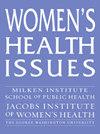远程医疗药物流产患者人工流产前超声检查的应用。
IF 2.5
2区 医学
Q2 PUBLIC, ENVIRONMENTAL & OCCUPATIONAL HEALTH
引用次数: 0
摘要
背景:自2020年以来,一些临床医生为符合条件的患者提供了不需要超声筛查的远程医疗药物流产护理。然而,一些远程医疗药物流产患者仍然接受超声检查。目的:了解远程医疗药物流产患者术前超声检查情况、超声检查原因及超声检查地点。研究设计:使用加州远程医疗家庭堕胎(CHAT)研究的数据,这是一项针对2021年和2022年使用远程医疗堕胎服务的患者的队列研究,参与者被问及他们是否有堕胎前超声成像,超声成像的原因,以及他们在哪里获得的超声成像。我们使用卡方检验、Fisher精确检验和多变量逻辑回归分析这些反应。结果:在1775名参与者中,11% (n = 194)在流产前进行了超声检查。在多变量模型中,年龄较小、食物不安全、怀孕持续时间为35天(5周)或更长,或不确定其怀孕持续时间的参与者更有可能获得流产前超声检查。超声检查最常见的原因是评估妊娠期(69%)。大多数参与者在诊所(41%)或急诊室或医院(27%)接受了影像学检查,尽管有些人在危重妊娠中心(14%)接受了影像学检查。在接受超声检查的人中,8%是由远程保健提供者介绍的;其余的则主动寻求超声检查。结论:医院、诊所和影像机构可以制定政策,为希望或需要进行流产前超声检查的患者增加超声检查的可及性。本文章由计算机程序翻译,如有差异,请以英文原文为准。
Use of Preabortion Ultrasonography Among Telehealth Medication Abortion Patients
Background
Since 2020, some clinicians have offered telehealth medication abortion care that does not require ultrasonographic screening for eligible patients. However, some telehealth medication abortion patients nonetheless obtain ultrasonography.
Objective
This study aims to understand which patients obtain ultrasonography before telehealth medication abortion, their reasons for ultrasonography, and where they obtain it.
Study Design
Using data from the California Home Abortion by Telehealth (CHAT) Study, a cohort study of patients using telehealth abortion services in 2021 and 2022, participants were asked whether they had pre-abortion ultrasonographic imaging, reasons for the ultrasonography, and where they obtained it. We analyzed these responses using chi-squared tests, Fisher's exact tests, and multivariable logistic regression.
Results
Among 1,775 participants, 11% (n = 194) obtained ultrasonography before their abortion. In the multivariable model, participants who were younger, were food insecure, had a pregnancy duration of 35 days (5 weeks) or more, or were unsure of their pregnancy duration were significantly more likely to obtain pre-abortion ultrasonography. The most common reason for ultrasonography was to assess pregnancy duration (69%). Most participants obtained imaging at a clinic (41%) or at an emergency room or hospital (27%), although some obtained imaging at crisis pregnancy centers (14%). Of those who obtained ultrasonography, 8% were referred by their telehealth provider; the remainder sought ultrasonography on their own initiative.
Conclusion
Hospitals, clinics, and imaging facilities can create policies to increase the accessibility of ultrasonography for those who desire or require pre-abortion ultrasonography.
求助全文
通过发布文献求助,成功后即可免费获取论文全文。
去求助
来源期刊

Womens Health Issues
Multiple-
CiteScore
4.50
自引率
6.20%
发文量
97
审稿时长
32 days
期刊介绍:
Women"s Health Issues (WHI) is a peer-reviewed, bimonthly, multidisciplinary journal that publishes research and review manuscripts related to women"s health care and policy. As the official journal of the Jacobs Institute of Women"s Health, it is dedicated to improving the health and health care of all women throughout the lifespan and in diverse communities. The journal seeks to inform health services researchers, health care and public health professionals, social scientists, policymakers, and others concerned with women"s health.
 求助内容:
求助内容: 应助结果提醒方式:
应助结果提醒方式:


